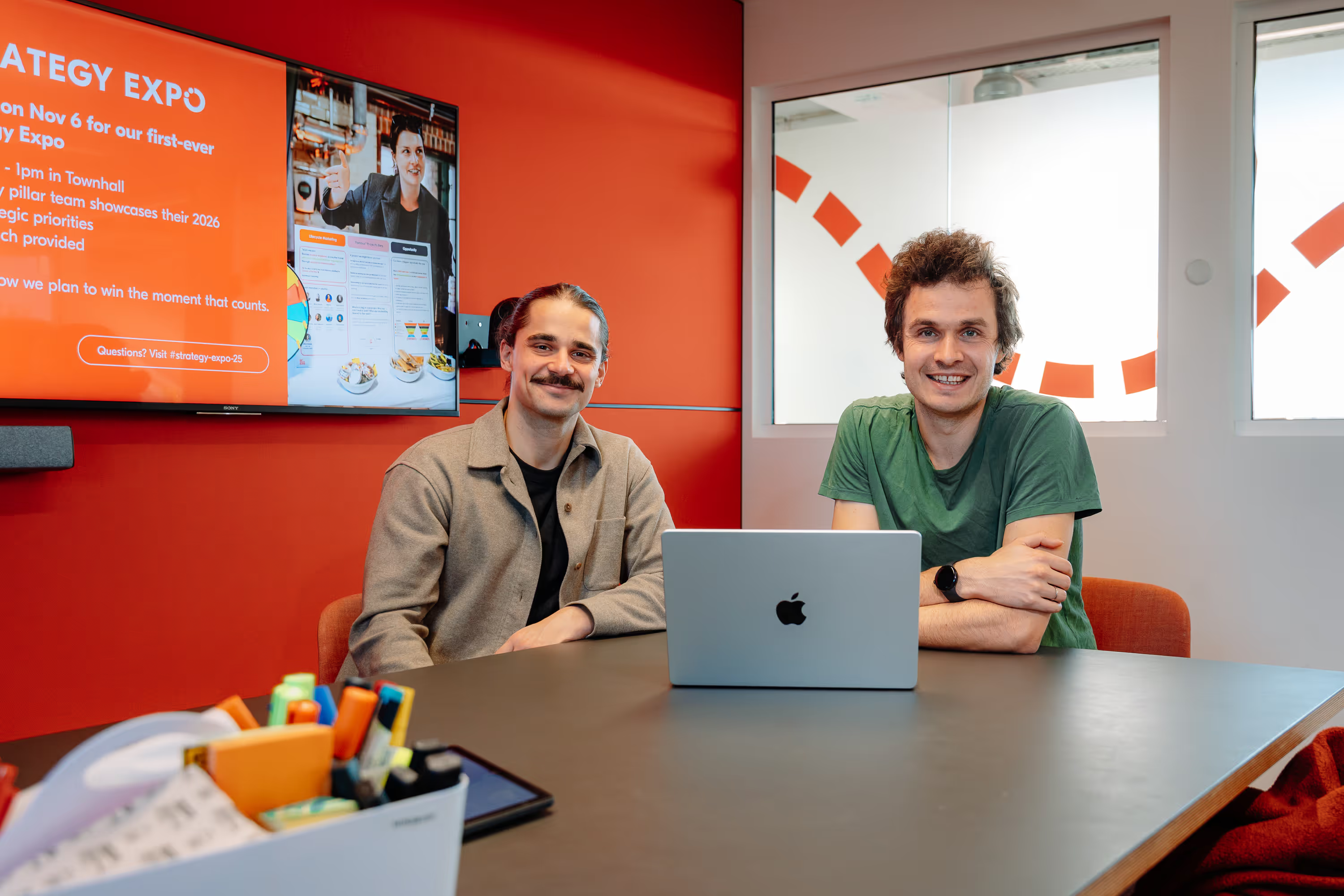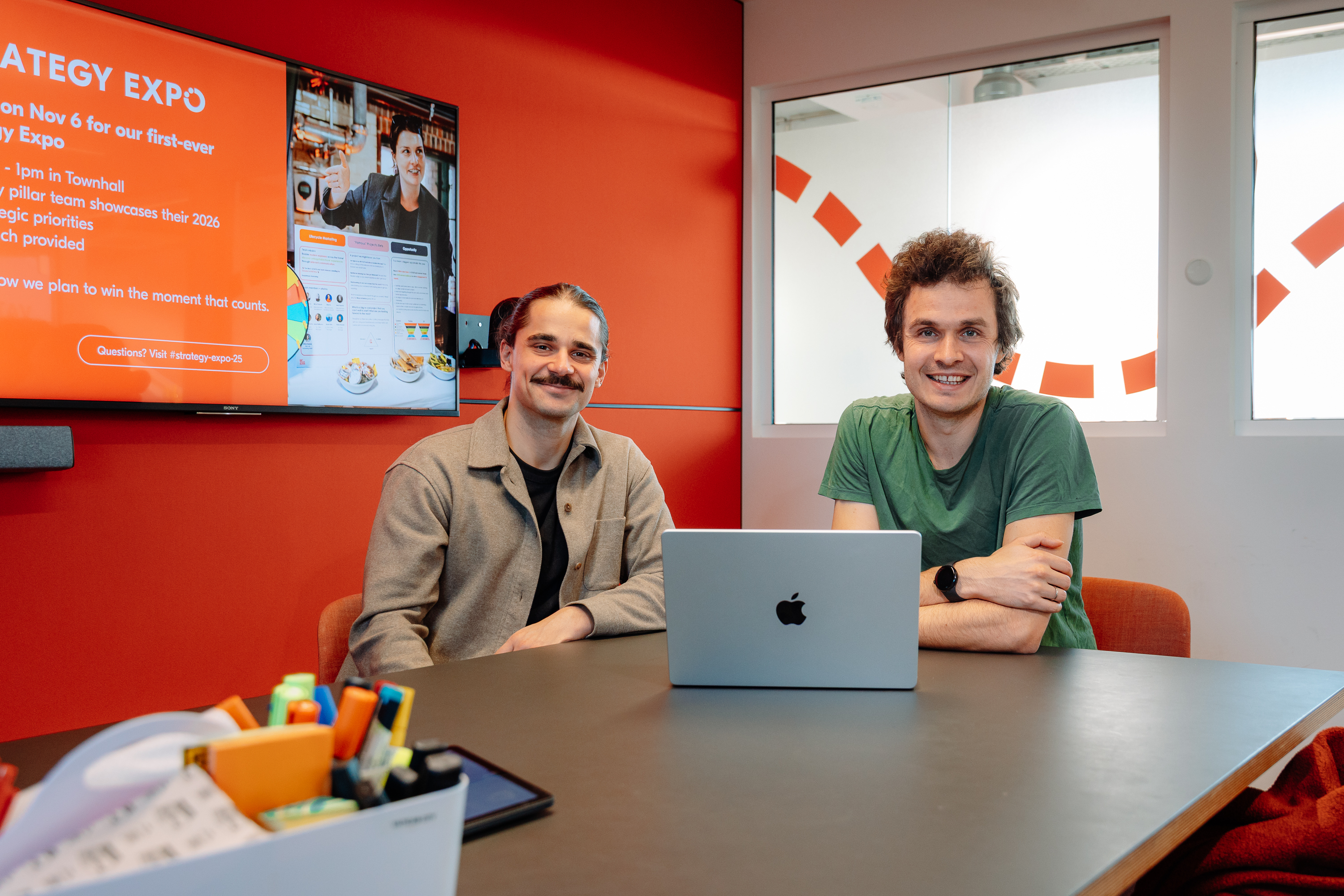What is Design Thinking and How Do We Use It?
In reality, design thinking is more of a process for creative problem-solving.

Key takeaways:
What is design thinking? What do you think of when you think of design thinking?
Perhaps you imagine a plethora of post-it notes, a swirling whirlwind of inspiration like in Minority Report. Perhaps we’re snatching ideas out of the brainstorm, shuffling content and design — it’s technical, fluid, and amazing. Or maybe you’re thinking of something like Steve Jobs, sitting alone in his room on a futon. A minuscule seed of inspiration begins to form, and a single drop of genius drips down. Craig Johnson, senior product designer, clarifies what design thinking really is and how your team can use it too.
{{divider}}

In reality, design thinking is more of a process for creative problem-solving.
I'm highlighting process and creativity, because those words may seem at odds with one another. Process is about following steps and rules, and being creative is about doing more whimsical, from-the-gut type stuff, right?
In truth, processes actually help us be more creative. More so than if we had a blank canvas of stiflingly, debilitating, unlimited possibilities. We’re actually more creative when we have constraints to work within, some methodology. While the output is something concrete and measurable, the ways in which we look at and approach the problem and solution space can be creative.
Below are a few of the ways we try to ensure there is plenty of space for creativity in a design thinking process.
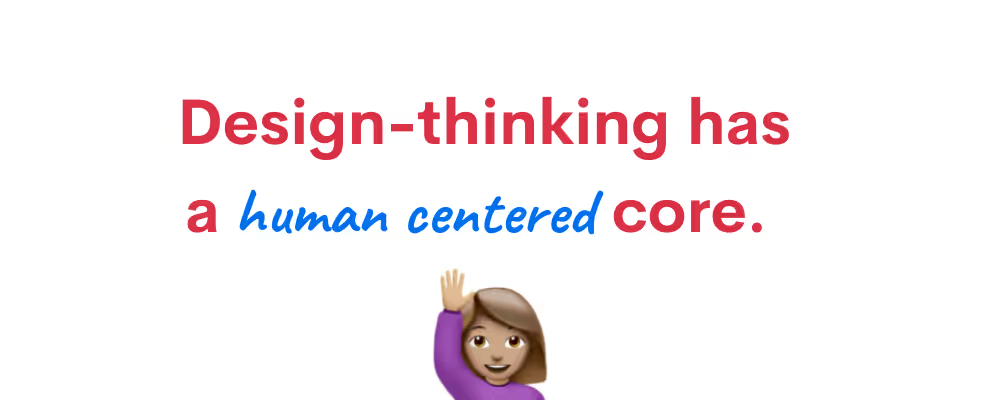
The design thinking approach
Design thinking is about being user-centric. Our users on the other end of our product are what's important. If our users feel far away, we need to get closer to them.
A design thinking process is crucial because it encourages companies and mission teams,
to focus on the people they're building for, which leads to better products.
One of our GetYourGuide guiding values is to be customer obsessed. And design thinking is a way for us to live that.
The Interaction Design Foundation frames the approach well:
Design thinking is a design methodology that provides a solution-based approach to solving problems. It's extremely useful to tackle complex problems that are ill-defined or unknown by understanding the human needs involved. We are re-framing the problem in human-centric ways, creating many ideas through brainstorming sessions, and adopting a hands-on approach in prototyping and testing.
5 Stages in the Design Thinking Process - Interaction Design Foundation
Design thinking is a methodology for thinking of solutions and outputs — not just tasks and work. It's a framework and there are many variations of the steps. A quick Google search will return thousands of articles, just like this one, on how to do it properly. Let's not say there is an absolute right or wrong way to do this. It's more about approaching things in a certain way.
Design thinking helps us tackle challenging user problems by ensuring we aim to understand their needs more intently. We do this by
- Focusing our mission team goals and problems in user-centric ways
- Producing multiple ideas and brainstorming — this is where we have some opportunities to get wild and creative.
- Prototyping and testing our ideas — this where we try them out and validate them.

Using design thinking at GetYourGuide
Here’s one more thought on design thinking before we dive into specific steps. Using a design thinking process also helps us pull from our different areas of expertise. We collaborate on a well-rounded solution that’s good for the business, technically viable, ANNND is something that our users love.
This idea plays very nicely into our mission team thinking at GetYourGuide: That UX, engineering managers, and product managers, all traditionally owning these separate pieces of the puzzle, should all be equal thought partners in the evolution of their product. The amalgamation of these parts is critical to a successful and balanced product.
These roles can, and should, rotate as well. We can all have input into any and all of these spheres in a rotating system of collaboration.

Now is a good time to clarify that despite the word design forming the words Design Thinking and the words Product Designer or Content Designer, UX team folks don’t have exclusive rights to design thinking. Many great innovators in literature, art, music, science, engineering, and business have all practiced it and realized the power and results that come from it.
Design thinking can and should be employed by anybody and everybody.
So now we know that it’s a framework and process. But…what is it?
The design thinking process
To get started with design thinking, it really can be a simple process of employing the following process. It’s also an iterative and non-linear process to utilize any or all of these key five steps or phases. Think of it as a toolbox. We can pick and choose the steps for the scenario as needed.
Design thinking is more a framework for thinking than a checklist of tasks. Unfortunately, there’s no “Oh yes, we’ve done all the bits, tick tick tick great we’ve done all the thinking.”
Sometimes, depending on the problem space, we might dive deeper into one area or collaborate with others more closely at a certain step. But in general, it’s a good idea to at least touch upon each one of these steps to ensure a thorough analysis of the problem and solution space.
You might also be interested in: How we built the ultimate customer insights team

The first stage of the process is to gain an empathetic understanding of the problem you are trying to solve.
This might involve consulting experts or individuals, gathering data, or even role-playing. Imagine you were designing a new seating plan for a bus, you might set up a bus seating plan with chairs and props in your office and run through some scenarios: getting on and off, standing in a crowded bus, sitting in an empty bus, window seat vs. the aisle and so on. You’re trying to understand this reality. You want to empathize with the scenario and the contextual issues to the best of your ability.
You might also be interested in: The UX design process and how we adapt to change

One way we empathize with users is to gather a spectrum of quantitative and qualitative data. We have a wealth of measurements in Looker. We run interviews to ask our users questions, and we watch Hotjar screen recordings to learn how they use and respond to things. Sometimes we might even take GetYourGuide tours to have hands-on experience with booking and using the app in-location, and so on.
Above is a picture of a GetYourGuide mission team watching a live user interview. When we experience these things together, it's easier for us to empathize with our users' contextual issues because they're more tangible and concrete. We've given them meaning beyond a numerical data point.
You might also be interested in: 3 must-have skills every UX researcher needs

Now we’ve got all that empathy. Empathy, empathy, empathy. Feels great, right?
Now we need to define what we’re going to do with that overflowing, eye-watering amount of empathy we have. In this definition phase, this is where you will analyze our observations and synthesize them to define the core problems.
Product managers are usually really good at problem definitions that are very closely connected to goal business metrics. Remember that diagram of desirability, viability, and feasibility above? We’ve always got viability top-of-mind, as we all should, but when we define the problem here, we should try to frame it as a human-centered statement.
So in our case, we might have a product-centric statement like, “We know the faster users get to a bookable product, the higher their chance of purchase is. We want to cluster similar tours and activities into collections to increase the speed of discovery and therefore CR.”
Wow, so sincere. Heart-warming stuff.
But, we could re-frame that as a user-centric statement like “As a user, I want clarity over the product offering, so that I can make an informed decision, fast.”
It’s not about dumbing down the statement, but it frames it in a way where we’re thinking of a user need and a user outcome.
This helps us lead into the ideation phase too, where we start to ask “How might we?” questions, “How might we improve the clarity of offerings on our landing pages?”
Notice also when we rearrange that statement, we’re not framing the solution space in the problem statement either. This leaves lots of room for us to think up all sorts of ideas.

With some empathy, a good contextual understanding of the problem, and a well-crafted problem statement, we’re ready to start thinking about ways to solve the problem statement.
This is the part where you can get creative — and there are hundreds of ideation techniques.
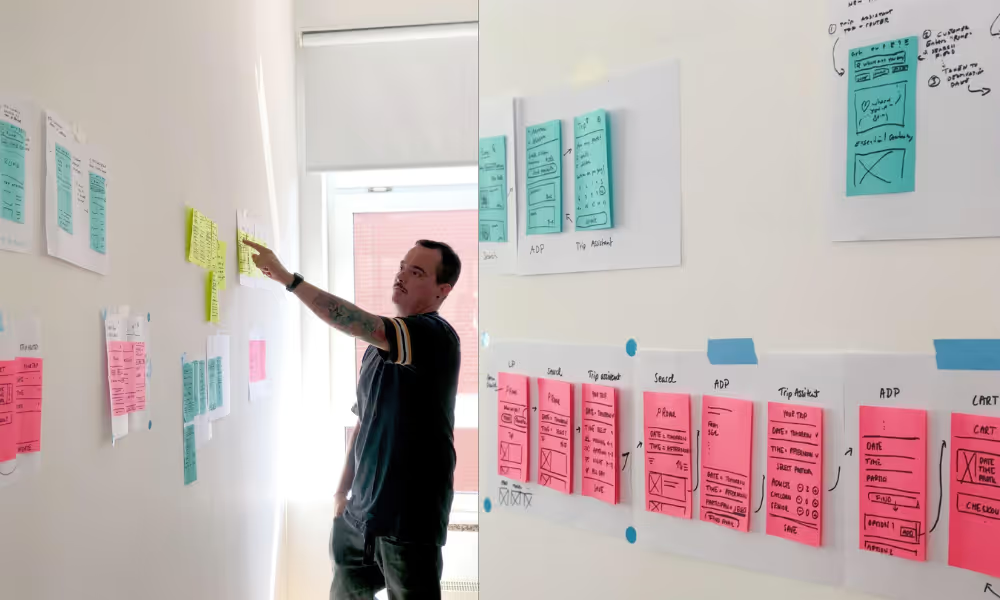
Most commonly at GetYourGuide, we do things like whiteboard sketching, brainstorming sessions, and crazy-eights. The critical part of this phase is that it’s often easy for us to settle on the most obvious idea or the first idea, and we should push beyond that moment. We need to explore bad ideas as well. That’s part of the work.
Things like timed sketching exercises with thick markers force participants to be visual and fast — there’s no room for details.

Post-it ideation is also an excellent way to include lots of people. It can be more inclusive because people don't get hung up on their drawing skills, and you can cover a lot of ground in a short time frame.
One point on these sessions — the outcome should be lots of great ideas. It's true,
and you should always start with the idea of "No idea is a bad idea". Diverge first to gather a broad spectrum of ideas, and converge again on ideas that relate directly to your user goals. Before you proceed to prototyping, align on key ideas or themes.

One of my favorite ways to do this is with dot voting on individual ideas first — so the team surfaces the best ideas. Then map those top ideas to a simple prioritization matrix, mapping ideas or themes against complexity and user value. Top-right being high value, high complexity, bottom left being low complexity, low value. Again, we’re keeping user value central to our decision-making process.
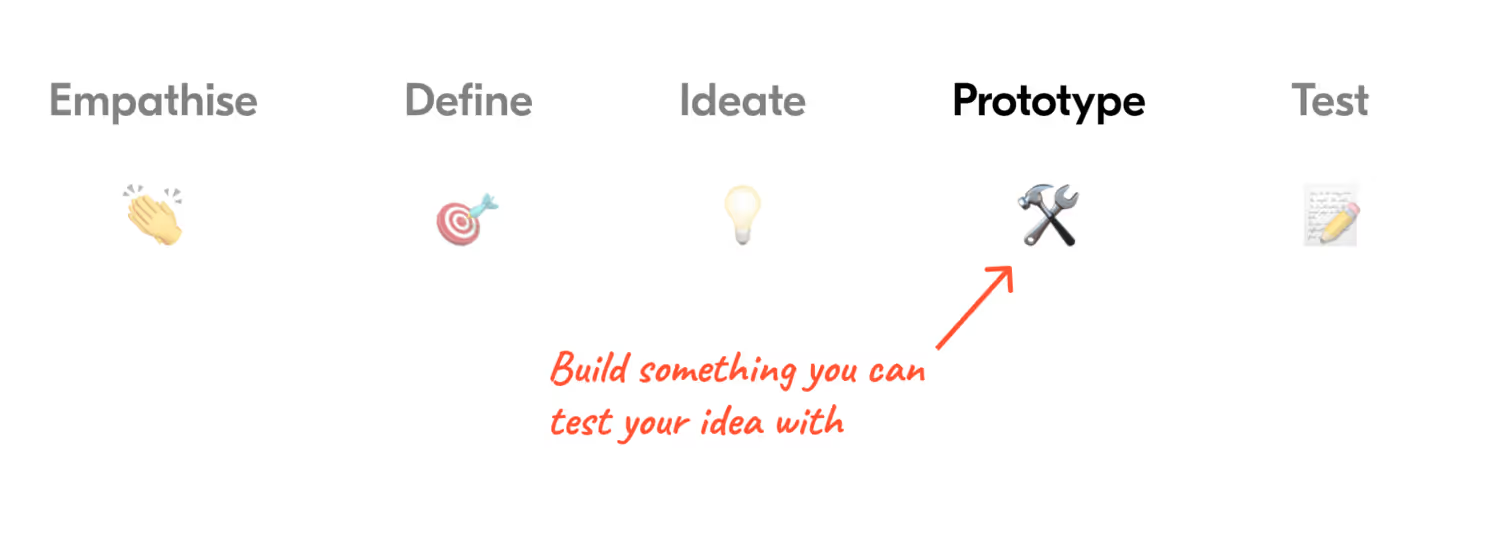
So what do you do with those well-prioritized ideas? Now, we can put together a prototype. A prototype might be pen on paper, it might be wireframes or rough sketches or a full-blown high fidelity prototype. It might also be a rough build of a larger feature or a rough idea of how a system fits together. Again, this process isn’t just for product or designers — it’s whatever you need to build to test your idea.
In the UX team, we often work in the realms of Figma prototypes, which are reasonably high fidelity, because we then test them with real users as if it were a fully implemented production they were using.

Ok, so we’ve got the empathy, the problem, all the ideas, the proto, and now, we can test it. How you test will, of course, depend on what your prototype is: if your prototype is written code, testing it may be seeing if it works or if it proves the technical feasibility of something.

Again, for us in the UX team, testing often means getting that hi-fi prototype into the hands of a real user. We observe them running through a series of tasks or attempting to achieve a particular goal. We observe their behaviors, try to understand and empathize with their decisions, and the cycle continues.
So why design thinking?
Let's summarize:
- Design thinking helps us understand our core user problems better. It gives us a human-centric reason for our work.
- It helps us to reduce risk by having well-thought-out, validated, and tested ideas.
- By doing defined ideation, we allow more and more revolutionary ideas to come through. (Think of the original iPod — back in the early 2000s, looking at all the other mp3 players around, some looking like USB sticks, with all the buttons — omeone at some point had the idea of making an mp3 player with basically no buttons, which, you know, could’ve sounded like a dumb idea, but turned out to be an innovative one)
- Design thinking helps us learn more and iterate faster.
Further reading on design thinking, product and design process:
- Design Thinking 101 – Nielsen Norman Group
- 5 stages in the design thinking process by Interaction Design Org
- Design Thinking Process Ideou
- What is design thinking? InVision
If you’d like to join our Product & Design team, check out our Career page.


.jpg)

